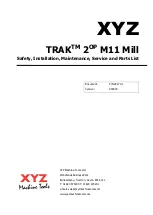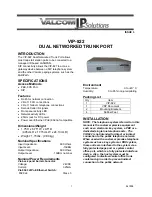
DeviceID
Each configured switch participating on the event bus has a unique DeviceID, which is analogous to the switch
source address so that the switch can be targeted as a specific destination on the bus.
The origin of the DeviceID is defined by the Cisco IOS hostname of the switch. However, the DeviceID
variable and its usage reside within the event gateway adjacent to the switch.
The logical Cisco IOS termination point on the event bus is embedded in the event gateway, which in turn
functions as a proxy on behalf of the switch. The event gateway represents the switch and its corresponding
DeviceID to the event bus.
The switch declares its hostname to the event gateway immediately after the successful connection to the
event gateway. The event gateway couples the DeviceID value to the Cisco IOS hostname each time this
connection is established. The event gateway retains this DeviceID value for the duration of its connection to
the switch.
Related Topics
Prerequisites for Configuring the Configuration Engine, on page 407
Hostname and DeviceID
The DeviceID is fixed at the time of the connection to the event gateway and does not change even when the
switch hostname is reconfigured.
When changing the switch hostname on the switch, the only way to refresh the DeviceID is to break the
connection between the switch and the event gateway. For instructions on refreshing DeviceIDs, see "Related
Topics."
When the connection is reestablished, the switch sends its modified hostname to the event gateway. The event
gateway redefines the DeviceID to the new value.
When using the Cisco Configuration Engine user interface, you must first set the DeviceID field to the
hostname value that the switch acquires
after
, not
before
, and you must reinitialize the configuration for
your Cisco IOS CNS agent. Otherwise, subsequent partial configuration command operations may
malfunction.
Caution
Related Topics
Refreshing DeviceIDs, on page 423
Hostname, DeviceID, and ConfigID
In standalone mode, when a hostname value is set for a switch, the configuration server uses the hostname as
the DeviceID when an event is sent on hostname. If the hostname has not been set, the event is sent on the
cn=<
value
> of the device.
In server mode, the hostname is not used. In this mode, the unique DeviceID attribute is always used for
sending an event on the bus. If this attribute is not set, you cannot update the switch.
These and other associated attributes (tag value pairs) are set when you run
Setup
on the Cisco Configuration
Engine.
Consolidated Platform Configuration Guide, Cisco IOS Release 15.2(4)E (Catalyst 2960-X Switches)
411
Information About Configuring the Configuration Engine
Summary of Contents for Catalyst 2960 Series
Page 96: ......
Page 196: ......
Page 250: ......
Page 292: ......
Page 488: ......
Page 589: ...P A R T VI Cisco Flexible NetFlow Configuring NetFlow Lite page 509 ...
Page 590: ......
Page 619: ...P A R T VII QoS Configuring QoS page 539 Configuring Auto QoS page 645 ...
Page 620: ......
Page 750: ......
Page 1604: ......
Page 1740: ......
Page 2105: ...P A R T XII Configuring Cisco IOS IP SLAs Configuring Cisco IP SLAs page 2025 ...
Page 2106: ......
Page 2118: ......
Page 2164: ......
















































